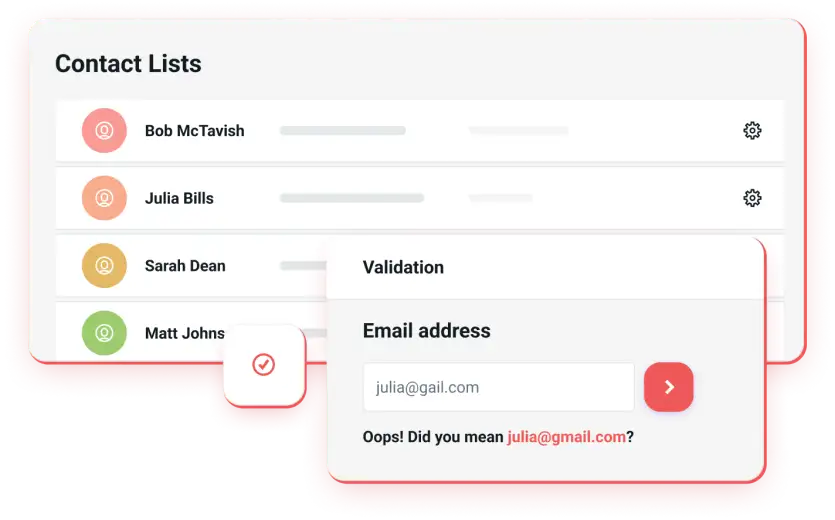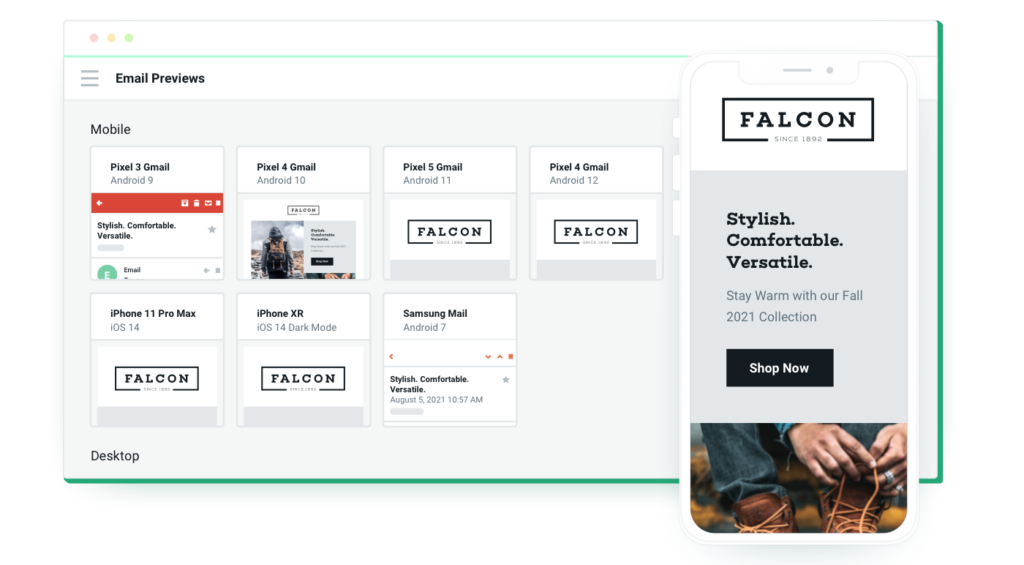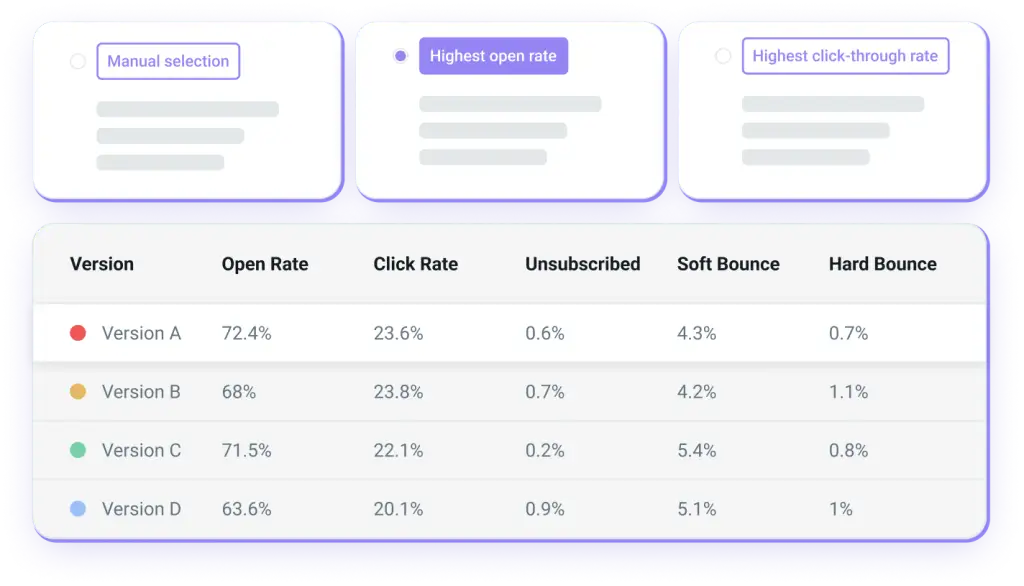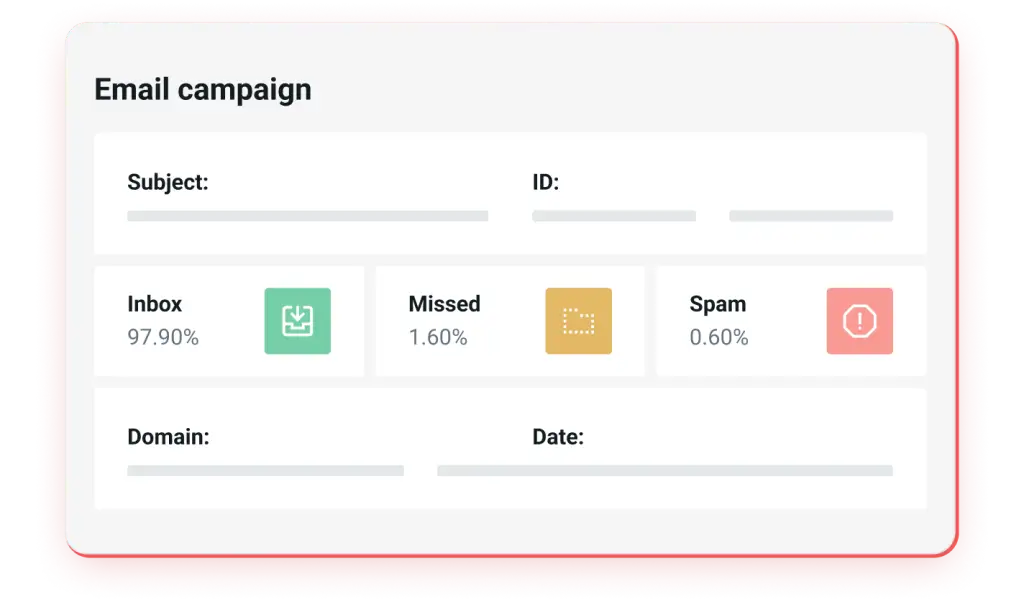Email Marketing
Email Testing: The Risks, Costs, and Benefits Explained

Email Marketing

Your company already uses lots of different marketing technology. What’s the point of email testing? Do you really need to spend more money on another subscription for another piece of software?
It’s likely you already realize how email supports the customer experience and has perhaps the best return on investment (ROI) of any marketing channel. Email handles everything from delivering transactional messages to boosting brand loyalty.
But isn’t a reliable email service provider (ESP) or a good customer relationship management (CRM) platform enough to cover everything? What’s so important about email testing services?
To help you see the full picture and decide which email testing tools your company needs, let’s explore the different reasons for testing and what’s at risk if you choose to ignore them.
The kinds of email testing that will be most beneficial to your company depend on your industry, the types of emails you’re sending, the size of your program, and your overall goals for email marketing.
You may not need every type of email testing service. However, as you budget for the most important pieces of your martech stack, you should consider not only the price tag but also the cost of not testing.
Planning for the worst-case scenario is always a safe bet. Because as Murphy’s Law states: If it can go wrong, it will go wrong.
Here are four types of email testing, the basics of how they work, and the associated costs:

Email address validation is a type of email testing that verifies the legitimacy of your contact data. There are plenty of reasons your company may need to validate email addresses:
Email validation is an important part of list hygiene best practices. There are solutions that help senders verify contacts across their entire database as well as email testing that uses an API to verify addresses at signup.
Clean contact data, including valid email addresses, helps you run an efficient email program. But more importantly, a list of valid contacts supports deliverability. By that we mean sending emails to verified addresses helps you avoid the spam folder.
Here are a few reasons why email validation is connected to deliverability:
High bounce rates: When you attempt to deliver mail to an invalid email address, it bounces. A high hard bounce rate leads to a bad sender reputation. When mailbox providers notice this, they see you as an irresponsible sender or even a potential spammer. So, spam is where more messages end up.
Low engagement rates: If there’s no one behind an email address, there’s nobody to engage with what you’re sending. A list that contains too many invalid addresses is full of dead weight that drags down email engagement metrics like open rates and click rates. When mailbox providers see low engagement, it’s a sign your emails are unwanted and may belong in spam.
Spam traps: Mailbox providers use fake email accounts to catch spammers. One type is known as a recycled spam trap. For example, Gmail could reuse an abandoned account that was valid once upon a time. Now, however, if you send to that contact, it shows you’re not keeping up with list hygiene and your sender reputation could take a hit.
While you can find “free email testers” out there, these tools aren’t going to cut it for most senders. That is, unless you like manually testing one email address at a time.
If you have a large list or are actively adding new subscribers, more robust email validation tools can be very valuable.
Most email validation services are based on volume. Some ESPs may include validations as part of paid plans. For example, users of Mailgun Send’s higher-tiered plans get 5,000 validations per month while enterprise users can customize to meet their needs. Email validations can also be purchased as an add-on, ranging from $0.80 to $1.20 per 100 validations.
Those who need a significantly higher volume of validations can leverage Mailgun Enterprise options to get the perfect plan for their needs whether it be email validation as a stand-alone or combined with other plans.
Start With Mailgun Send For Free >>
So, what could go wrong if you choose not to validate email addresses? Two words: email deliverability. All sorts of deliverability issues can be traced back to a failure to maintain good list hygiene:
To put it simply, a list full of invalid addresses will damage your sender reputation and reduce your ability to reach the inbox.
Let’s say you’re a B2B sender and Outlook starts filtering your messages into the junk folder because you’ve been sending mail to outdated contacts who’ve switched jobs.
If 30% of your B2B contacts are using Outlook, that’s nearly a third of your list that won’t be able to engage with newsletters, lead nurturing campaigns, product announcements, and more. It’s easy to see how that would negatively impact marketing efforts.

Want to see into the future and find out how your HTML email campaigns look inside subscribers’ inboxes? That’s one thing email pre-send testing can do. But why would you need to do this?
The way an email promotion or newsletter looks before you hit send may not be how it looks when someone opens it. That’s because email clients have different ways of handling code and different levels of support for HTML and CSS.
This is known as email rendering. Gmail, Apple Mail, Yahoo, Outlook, and all the rest have their own rendering engines and limitations. That’s why many marketing teams use tools to view email previews on various clients, devices, and mobile operating systems.
Email previews are screenshots of how your campaign renders in different scenarios. That could be on the Gmail App with a Pixel 7 using Android 13, or in Apple Mail with an iPhone 13 in dark mode on iOS 15 – just to name a couple of examples.
This type of email testing also goes beyond previews. Pre-send testing can include comprehensive email quality assurance (QA), using an automated checklist to do a complete review. That includes:
Note: There is another kind of email QA in which IT and software developers test SMTP (Simple Mail Transfer Protocol) servers for sending email.
There are plenty of reasons to conduct pre-send email testing. Three of the most significant are protecting your brand, supporting good email engagement, and maximizing email marketing ROI.
Email campaigns with broken layouts, broken links, and inaccessible content reflect poorly on you as a sender and brand. If people are unable to read your copy or click on your CTAs, your engagement rates will suffer. And if people can’t engage with email campaigns, they can’t convert. That reduces the impact of email and its potential to generate revenue.
On the other hand, an email that’s optimized for every inbox is also optimized for better performance and results.
If your team uses an automated email checklist, they’re more likely to catch problems before a big campaign hits inboxes. Email QA testing platforms typically include ways for teams to collaborate throughout the review and approval process so that everything gets signed off before launch.
Once again, there are free and cheap testing options for previewing HTML emails. However, they tend to be very limited in the scope and volume of previews available. These free email testing tools also don’t offer any QA checks beyond the previews – which may or may not be reliable.
Starter plans for two of the most popular email pre-send testing solutions range from $74 to $99 per month. Some SaaS platforms use an email preview API to include client rendering test results as a feature of the software that adds value to users.
One thing that sets Sinch Email on Acid apart from alternatives is that it provides users with unlimited email testing. You can preview campaigns as many times as needed without any added charges for overages.
Email marketing QA prevents many problems. For example, a broken link in your CTA button could bring the ROI of that campaign down to zero. But let’s imagine what could happen if there are rendering issues.
What if you’d planned a big Black Friday email campaign but failed to test and preview it before sending? Turns out the campaign was unreadable on the Gmail app in dark mode. But that can’t be too many people, right?
Sinch Mailjet’s report, The path to email engagement 2024, found that more than 72% of consumers have a Gmail account, 71.5% primarily check email on a mobile device, and nearly 25% usually view emails in dark mode.
For the sake of discussion, let’s say this problem impacted just 20% of your list of 20-thousand customers. That’s 4,000 people who are very unlikely to engage and convert.
Your typical open rate is 30%, that means 1,200 of those 4,000 subscribers likely opened it. But when they did, the text disappeared into the background (including the coupon code). So, most people just delete their email. If you’d normally expect a 10% click rate on a BFCM campaign, that’s 120 online shoppers who won’t be able to take advantage of your Black Friday promotion.

Another way to boost email performance is to conduct split testing or email A/B testing.
This form of email testing lets marketers experiment with different ideas to find out what prompts contacts to take specific actions. The things you test are called variables and can include:
For example, you may want to test if your CTA gets more clicks when it’s higher up in the email. Or you could split test a highly designed version of a campaign against a simple version that’s more like plain text.
With A/B testing, you can stop guessing about what’s most interesting to your subscribers because you will know what makes them respond. Over time, you’ll gain a much deeper understanding of how to get your contacts to engage with email campaigns.
Sometimes, even the smallest changes can lead to impressive results. Other times, you’ll make what feels like a major change and your metrics barely move at all. That’s the fun of email A/B testing. You’re always learning and uncovering surprises.
Many popular ESPs include email A/B testing as a feature of the software. However, some providers only offer basic subject line split tests. Because it’s for more advanced programs, comprehensive A/B testing may not be included in the free or trial versions.
For example, Sinch Mailjet offers A/B testing with its Premium plans, which start at $25 per month and come with a host of other plan upgrades. Mailjet A/B testing lets you experiment with up to 10 versions of an email simultaneously. Plus, you can define the criteria and parameters for the winning variable.
Start With Mailjet For Free >>

The biggest risk of failing to split test email marketing elements is missing out on better performing campaigns. It’s hard to say how much regular A/B testing will affect email ROI. But one thing is for sure … It can only help, not hurt.
Let’s say you A/B test button copy using a more creative CTA in your email. Imagine you find the new copy increases click rates from 3% to 6%. If 7,500 people from your list of 25-thousand contacts open this email (30% open rate), that doubles the clicks to your website from 225 to 450.
Had you never taken a chance and tested the alternate CTA, you’d be missing a bunch of web traffic you could’ve attributed to email marketing efforts.

This form of email testing may be called a spam test or seed testing. The point is to find out the likelihood of emails being filtered into spam rather than reaching the inbox.
Inbox placement testing is also known as seed testing because the process makes use of “seed mailboxes.” These are email accounts created for the specific purpose of testing inbox placement. You send your message to a collection of test mailboxes or “seedboxes” and receive a report with predictive results on inbox placement.
Reviewing inbox placement reports shows you if a specific mailbox provider like Gmail or Outlook is likely to filter a message into spam or if emails are going missing due to a blocklisting or other issue.
Depending on the email deliverability tool, you may also be able to see your score from major anti-spam filters such as SpamAssassin and check to make sure email authentication protocols are working correctly.
All these email testing features help you catch deliverability issues before they cause serious problems.
There are more than a free spam testing sites or “spam checkers” online. The problem with these free tools is they only examine individual emails for potential spam signals. At the very best, they’ll provide a spam score. But that’s far from the same thing as actual inbox placement testing.
Even when they use the same anti-spam technology, mailbox providers and email administrators can customize the settings. Ultimately, it’s up to the provider to decide how your emails are filtered. That’s why inbox placement testing is more reliable.
If you really care about reaching the inbox, consider a more comprehensive email deliverability solution. Mailgun Optimize offers inbox placement testing along with blocklist monitoring, email address/list validation, and even email previews. Plans start at $49 per month, and the first month is free.
Mailgun Optimize also provides users with actionable insights on how to improve inbox placement based on why it appears your emails are being filtered into spam. An inbox placement test takes less than 60 seconds to run, and it could save you from an email disaster.
Imagine you run an ecommerce store and Gmail starts blocking your emails. You’ve been added to a blocklist and will spend a week trying to get delisted. In the meantime, you’ve got a weekly email promotion going out on Thursday that usually generates around $10K, that’s attributed to the email channel.
Let’s say 35% of your list of 30-thousand subscribers have Gmail addresses. That’s 10,500 people who won’t receive the weekly promotion, and some of them were eagerly anticipating it.
If 30% of your list doesn’t receive the promotion, it stands to reason that engagement and conversions will drop by the same percentage. So too could the revenue generated from that email. You’ll end up losing $3,000 because of a preventable deliverability issue.
Each one of these email testing options provides important benefits that give your email program an advantage. Now that you’re armed with some knowledge, you can decide what type of testing your company truly needs.
If you need to test email addresses, Mailgun Validate is one of the fastest and most reliable email verification tools on the market.
Want to optimize your email marketing campaigns for every inbox and every subscriber? Sinch Email on Acid’s unlimited previews combined with other features help you put your best email forward.
If you could use a little of everything, Mailgun Optimize provides validations, previews, and a host of deliverability features like inbox placement testing and integrations with Google Postmaters Tools as well as Microsoft SNDS.
In the end, you’ll find that investing in your email program is worth every penny. 75% of global consumers say they prefer getting promotional and transactional messages from brands via email. Email testing ensures you get delivered to the inbox and deliver your best.